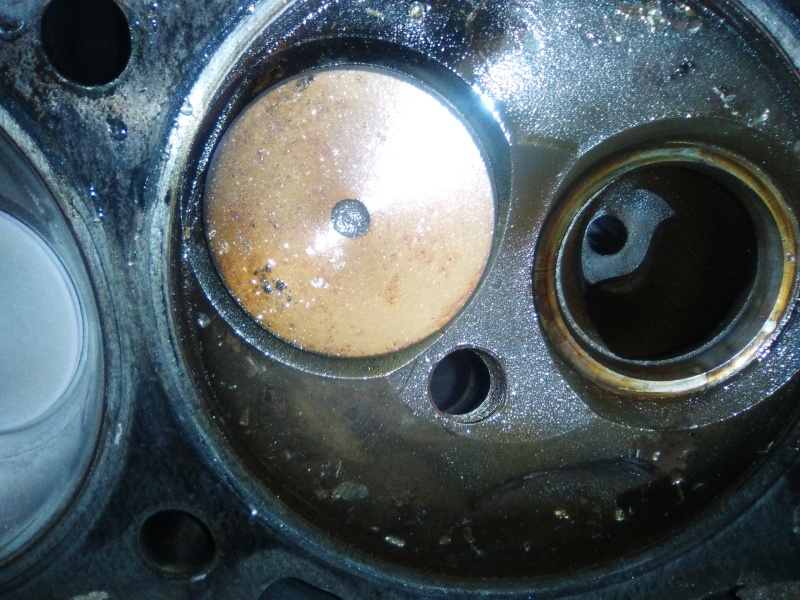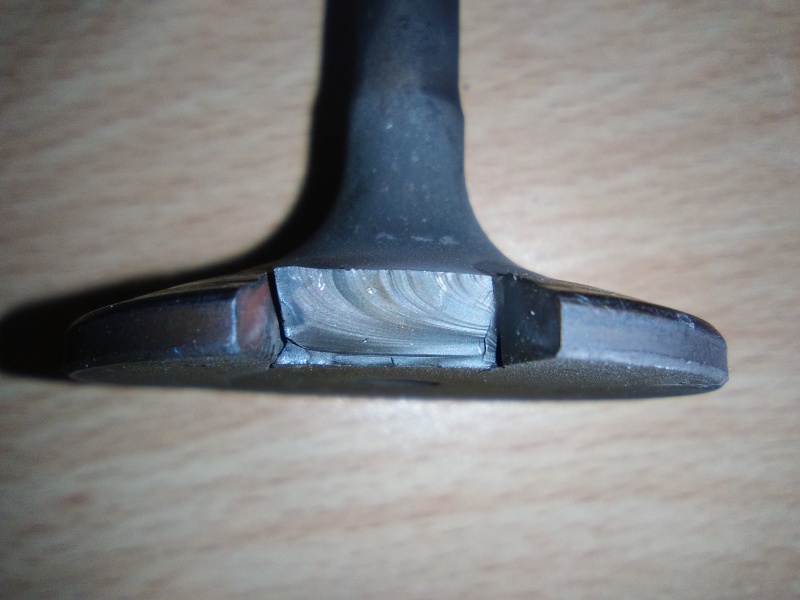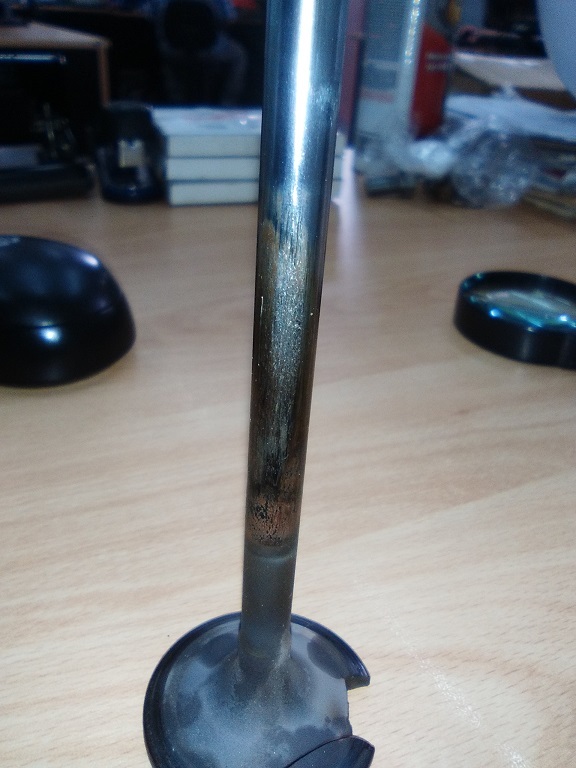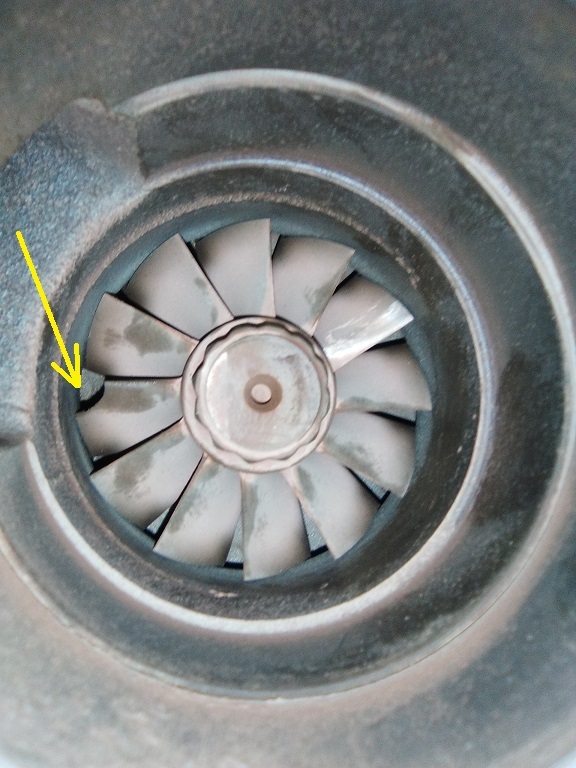Azraelo
Mechanical
- Aug 16, 2009
- 13
Hi everybody! Please take a look at these photos. An exhaust valve failed in an automotive natural gas engine. The engine is new, just 1400 hours (around 28000 Kilometers). Operator complains about low output power and vibration. No remarkable fault codes logged in ECU (just 3 counts of oxygen sensor). Boroscope reveals failure. When disassembling, there was a lot of clearance between this valve and its guide. When taken out, bechmarks are noticed in the valve crack, consistent with mechanical fatigue. The valve guide diameter was fine at the top, but much much wider at the bottom. Seems that there was a a bad valve sitting (by the uneven pattern in the seat). But more interesting to me is the crack following a circular pattern and the order of the events. According to your expertise, what do you think happened here? what happened first? the fatigue failure or the out-of-round in the valve guide? Any positive suggestions are welcome. Thanks.








